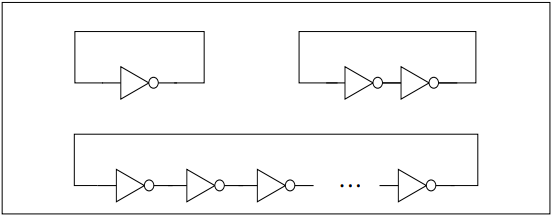1.4: The Physical Bit
- Page ID
- 50153
If a bit is to be stored or transported, it must have a physical form. Whatever object stores the bit has two distinct states, one of which is interpreted as 0 and the other as 1. A bit is stored by putting the object in one of these states, and when the bit is needed the state of the object is measured. If the object has moved from one location to another without changing its state then communications has occurred. If the object has persisted over some time in its same state then it has served as a memory. If the object has had its state changed in a random way then its original value has been forgotten.
In keeping with the Engineering Imperative (make it smaller, faster, stronger, smarter, safer, cheaper),

we are especially interested in physical objects that are small. The limit to how small an object can be and still store a bit of information comes from quantum mechanics. The quantum bit, or qubit, is a model of an object that can store a single bit but is so small that it is subject to the limitations quantum mechanics places on measurements.


